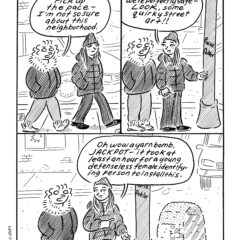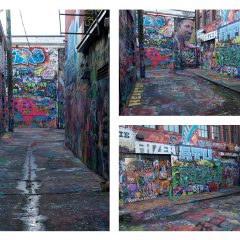Originally, New Orleans was only going to have a single day to see Exhibit BE. But this collaborative graffiti-art project, opened to the public in November 2014 and billed as the “largest urban art exhibition in the South,” just stayed open…and open…and open.
The enormous, colorful show of spray-painted works, sculpture, and on-site performance soon became part of P.3+, a satellite exhibition program for New Orleans art biennial Prospect.3. Exhibit BE finally closed on Jan. 19, with a three-day party to mark its incredible success.
Complex undertaking
More than 40 artists took part in the graffiti project, which transformed DeGaulle Manor, a blighted apartment complex across the river from New Orleans in Algiers, Louisiana, into a vibrant celebration of black history, struggle, and accomplishment.
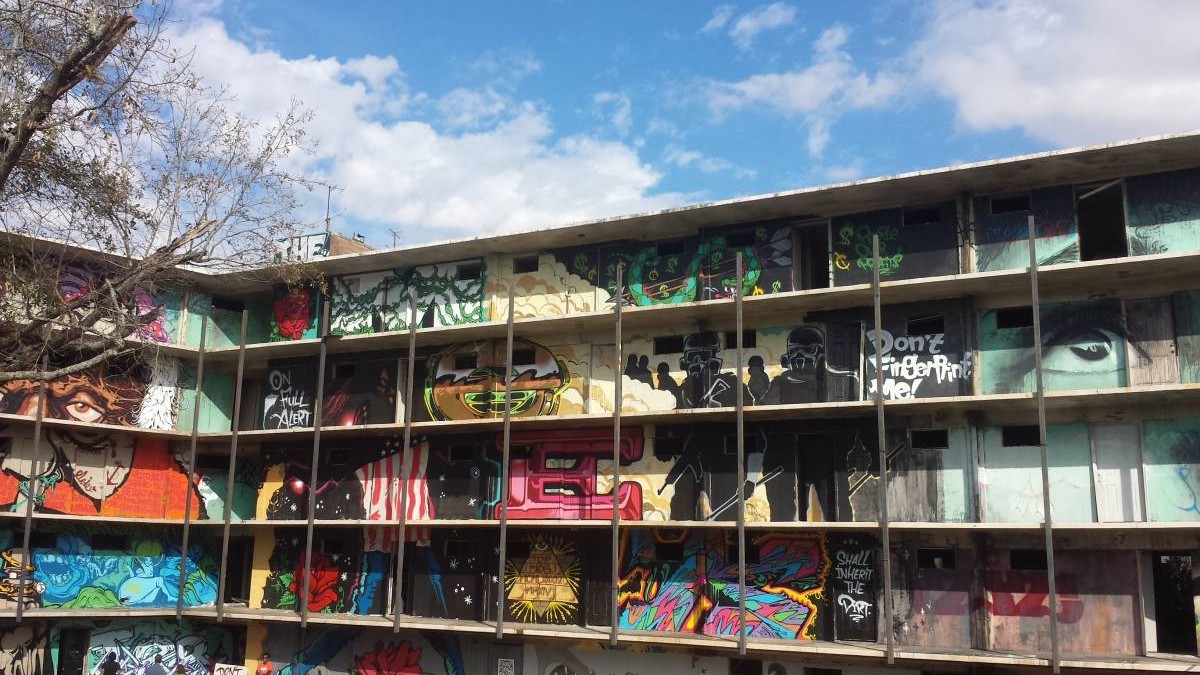
The former owners of the complex, which is also known as Woodlands Apartments and D-Block, made national news in 2006 with a planned Thanksgiving eviction of over 100 families. Empty of residents, the abandoned location had become a backdrop for local rap videos and a place for graffiti artists to create bigger works, mostly undisturbed.
That was how artist and filmmaker Brandan Odums, who snuck into the space to create his own work, first conceived of the idea. “When I stumbled upon the reality that this exhibit would take place, I had two truths I wanted to stand on,” Odums says. “One: be true to the culture of street art, and two: be true to the community in which this exhibit would stand. I navigated the first truth by reaching out to all the artists whose work I had already seen reflected in the space.”
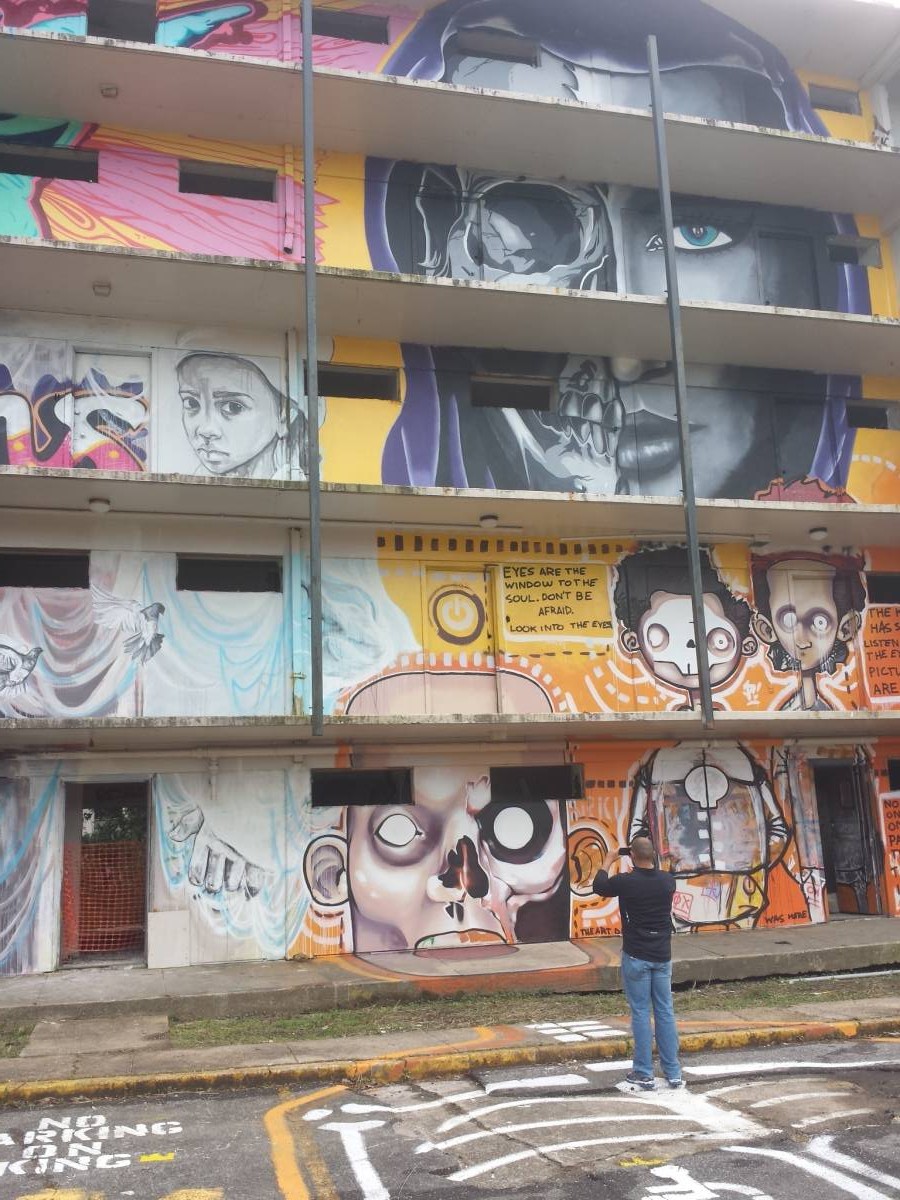
Setting reflecting struggle
Exhibit BE was a triumphant progression of Odums’ first public graffiti project, Project BE, which wasn’t public at all. In 2013, Odums began sneaking into the abandoned Florida Housing Projects in New Orleans’ Ninth Ward, discovering a thriving graffiti community hidden inside. He started adding his own work; eventually, people caught wind of the project.
The Housing Authority of New Orleans (HANO) eventually boarded up the Florida complex. On Saturday, Jan. 17, Odums announced that HANO had started demolishing the projects.
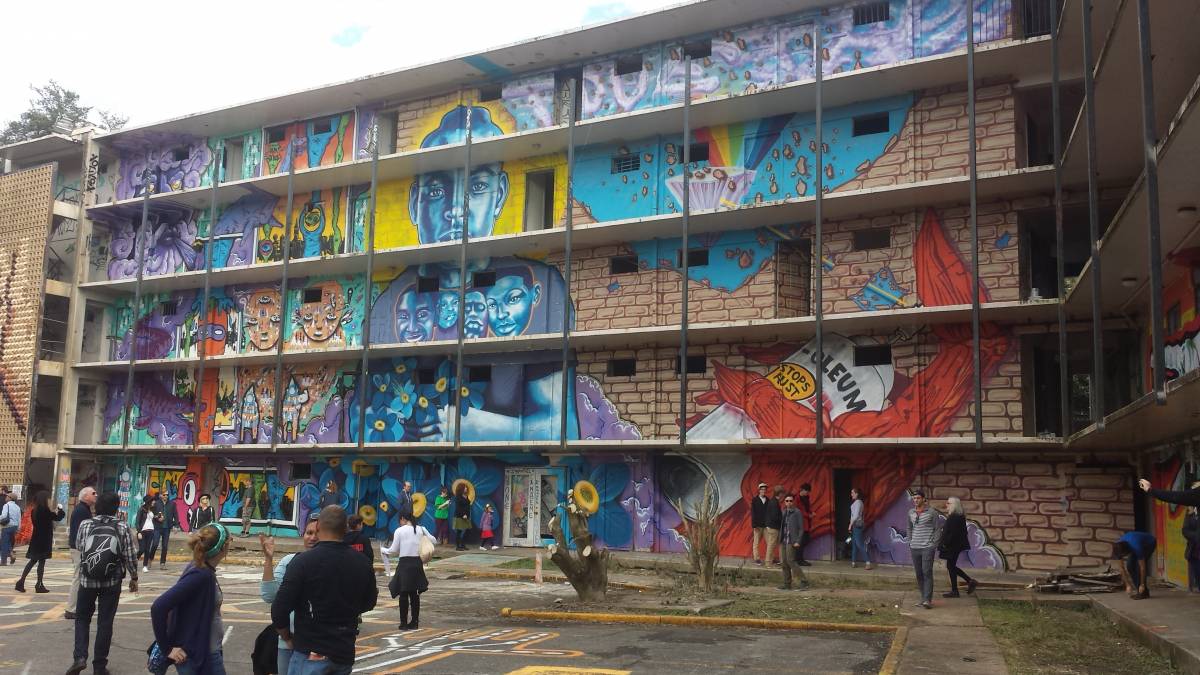
Odums worked with Lana Meyon and Lydia Nichols to develop the idea behind BE. At first, the plan was to open the exhibit for a single day on Nov. 15, 2014. But the response from locals, out-of-towners, kids on school tours, and other visitors proved “overwhelming,” Meyon says.
Exhibit BE stayed open for two more months.
“I wanted to cry, because people really got what we were trying to accomplish,” Meyon says. “It was more than art on walls. It was art on walls with a history, a narrative, a tale to tell, and people were so drawn to this tale that spoke through the art.”
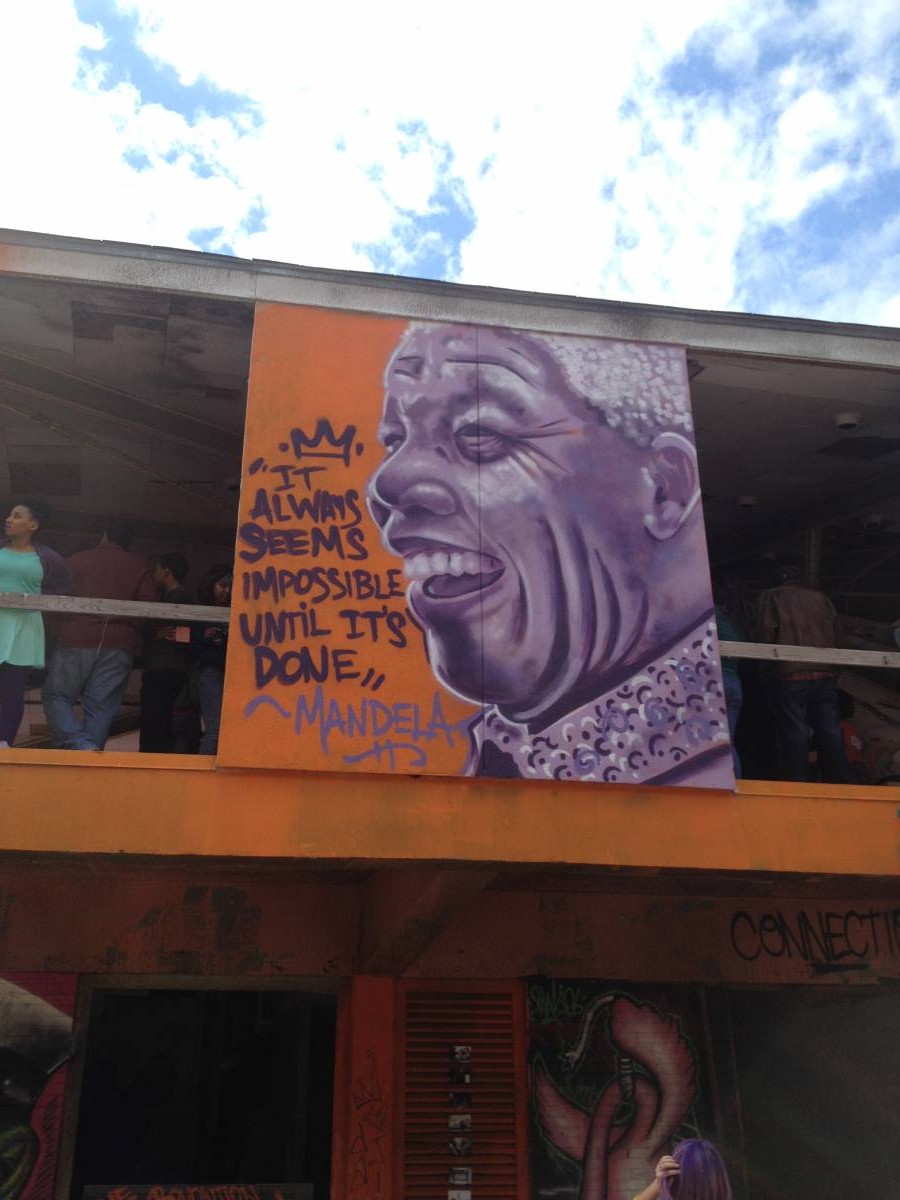
The process of BEing
Though Odums personally knew many of the graffiti artists, or “writers,” who had been asked to work on Exhibit BE–and though this project was legal, unlike Project BE–there were still considerable challenges involved in wrangling an exhibition of this size, especially with artists whose primary medium historically involves rebellion and independence.
“Most graffiti writers at this point in history are middle-class white males—though graffiti was originally a black and brown art form, one of the four pillars of hip-hop,” Nichols explains. “Younger writers initially resisted our suggestion to allow the individual and collective narratives that we learned and shared with them to influence their painting. The O.G.s, as they call older writers, are more grounded in hip-hop culture than the younger writers and, therefore, it was easier to corral them around this community-centered theme.”

Odums, Meyon, and Nichols divided the complex’s four five-story buildings into sections, asking graffiti writers and crews to pick the section they wanted. The artists had just two weeks to realize their vision, and all approached the project differently.
“The QNA crew created a scale model on paper in which they accounted for the balcony, windows—well, gaping holes where windows used to be—and doors,” Nichols says. “The Charls crew, on the other hand—one of them would be on the balcony painting, and the other would be on the ground guiding him left and right, higher and lower. Meek1, who painted alone, was running up and down the stairs for days. Everyone had their own process.”

Next came the challenge of addressing the abandoned apartments inside the complex. “From there, the interior spaces were delegated to art collectives and other installation-based artists,” Odums says. The detritus inside the apartments, including broken plaster, pipes, glass bottles, and appliances, remained. “Last came the sculptors, who I had given the task of creating with only found objects from the space,” Odums says.
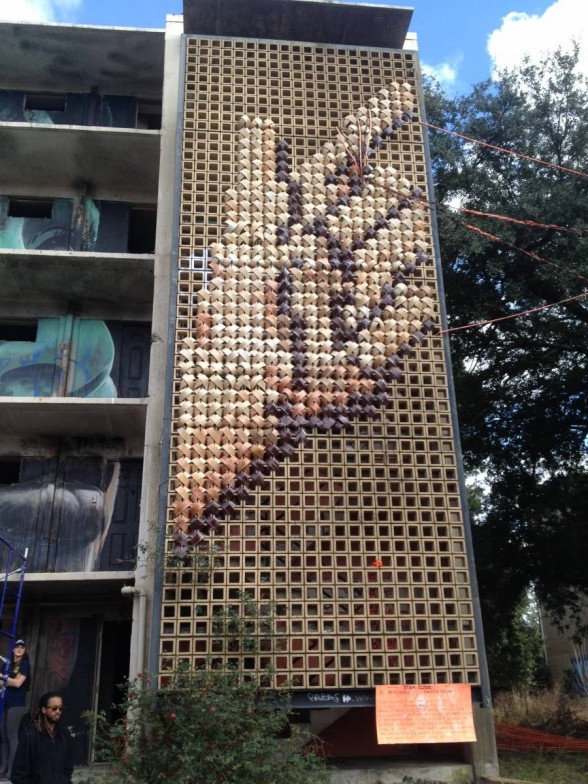

The greatest gift–and new BEginnings
Working in DeGaulle Manor, a place with such deep history, had rewards along with its challenges. The organizers reached out to former residents at the complex, inviting them to see what it had become. “The unexpected gifts came when people who used to live in the space would enter with great emotion, thanking the artists,” Odums says.
“No one I met was indifferent about having lived there,” Nichols says. “Each person had tales both of great sorrow and joy, of the parties they’d gone to, the music they’d created, the women they dated, the friends they’d played with, the drugs they’d done, the family members who they’d seen killed.”
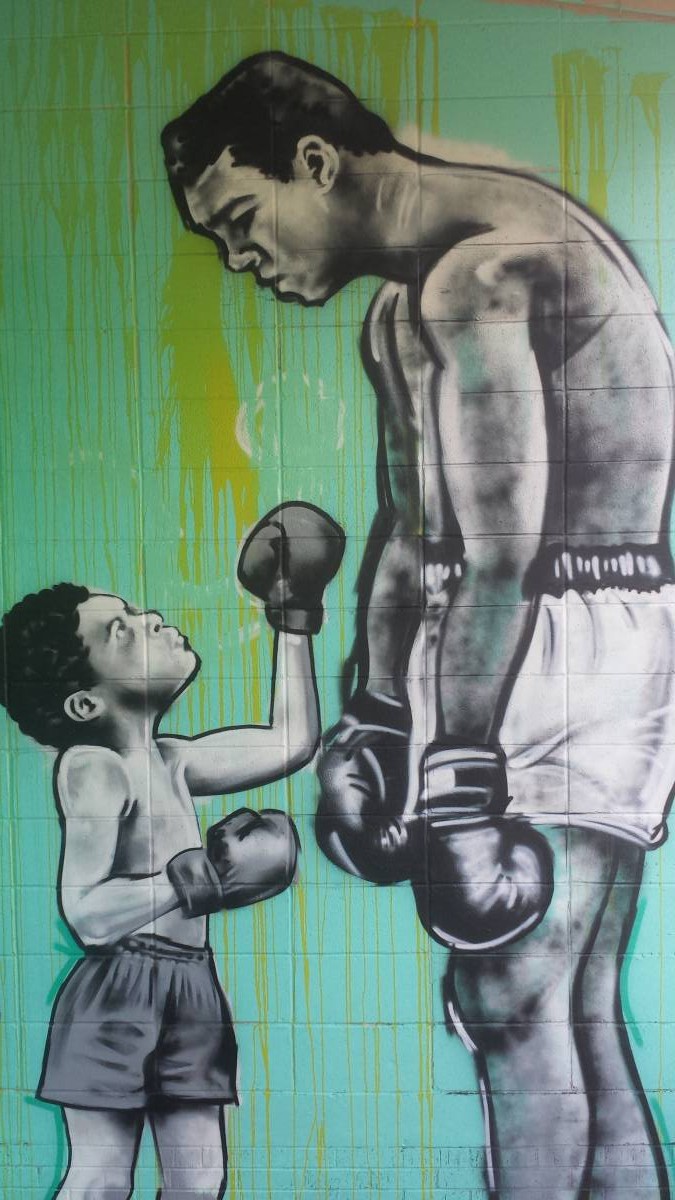
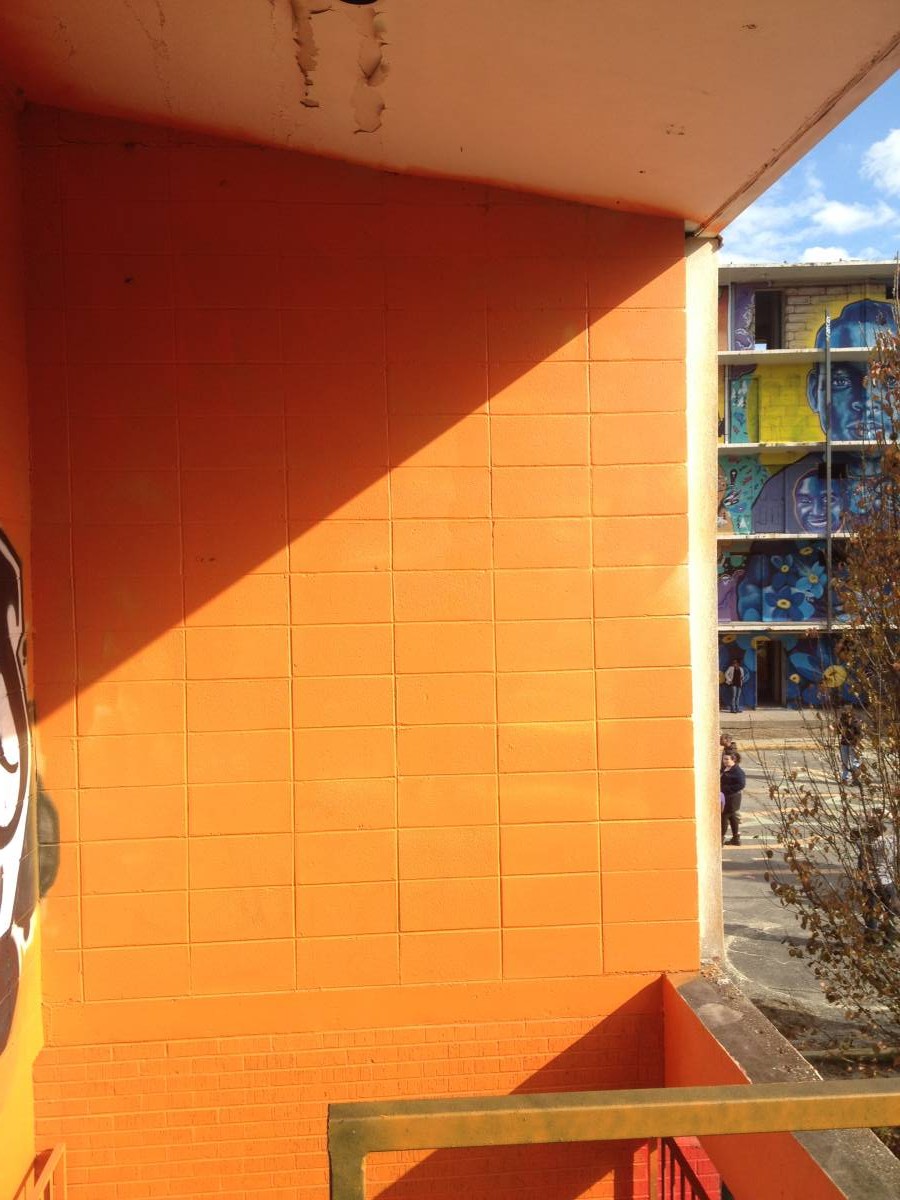
Monday, Jan. 19—Martin Luther King, Jr. Day—was the last chance crowds had to visit Exhibit BE in New Orleans. Packed with people, the complex grounds hummed and danced and watched and sang; performances included local musicians Dee-1 and Trombone Shorty, and the day culminated in an appearance by Erykah Badu as “DJ Lo Down Loretta Brown”.
But Jan. 19 was not the end of Exhibit BE, say Odums, Meyon, and Nichols. In fact, there are already plans in motion to bring BE to other cities, where the trio will collaborate with other organizations and artists, sharing best practices and helping create a version of Exhibit BE true to those communities.
“The three of us strongly value community, black liberation, and the stories that are kept, purposefully or by chance, out of the dominant narrative,” Nichols says. “Whatever we create in the future will prominently feature those aspects.”
Interested readers can follow Exhibit BE on Facebook and Instagram to see where the project goes next. “They can’t get rid of me,” Odums says of Meyon and Nichols. “We have miles to go before we sleep.”



